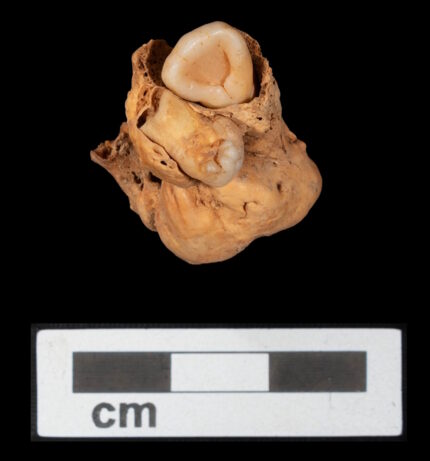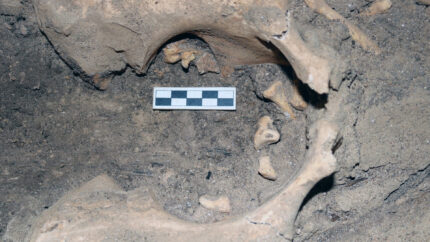
Teratomas are tumors, almost always benign, in which germ cells randomly grow malformed body parts like bone, teeth and hair. They are typically found in the reproductive organs where germ cells that haven’t gone awry make sperm and eggs, and much more frequently in the ovaries than the testicles. The previous archaeological teratomas on record (5th centuty B.C. Spain, 5th century A.D. France, 16th-17th century Peru, 15th-18th c. Portugal) were all ovarian. The most recent discovery is an ovarian teratoma as well.
The skeletal remains of a woman between 18 and 21 years old when she died were unearthed in a multi-chambered shaft room in Amarna’s North Desert Cemetery last year. The calcified mass with two deformed teeth was discovered inside her pelvic cavity above the plant fiber burial mat, indicating it was inside her body when she was buried, not an artifact of deposition.

“By 18-21 years, this individual probably would have been someone’s wife,” [Southern Illinois University Carbondale bioarchaeologist Gretchen Dabbs told Live Science in an email, but there is also “little doubt she was working in some fashion.” Previous research at Amarna has suggested that women this age were engaging in a range of trades, which might have included working on state-level building projects, brewing beer, or tending to household gardens and livestock.
The discovery has been published in the International Journal of Paleopathology.
* This article was originally published here






No comments:
Post a Comment